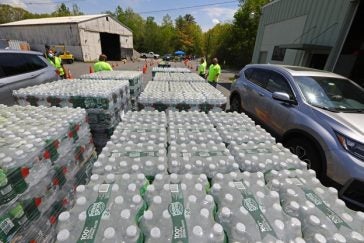
Image credit: Pat Greenhouse/Boston Globe Staff
Since Massachusetts enacted a new drinking water standard last fall (a combined 20 parts per trillion for six PFAS compounds), many communities have found elevated PFAS levels in their drinking water. The state requires testing for water suppliers that provide water to more than 10,000 residents, and of the results available, twenty percent of water systems exceed the new standard. The number of communities in Massachusetts – and beyond – with elevated levels of PFAS has increased the concerns of scientists. “It is extremely concerning to see such a potent and persistent class of toxicants that are pervasive in drinking water remain unregulated at the federal level,” said Dr. Elsie Sunderland, STEEP scientist and professor of environmental chemistry at Harvard University.
State officials acknowledged that while most suppliers have found ways to reduce their PFAS levels – either by blending contaminated wells with others that have lower concentrations of the chemicals or by connecting to alternate sources – at least 21 suppliers have had no choice but to continue delivering the contaminated water to residents. Among the communities still delivering water with elevated PFAS levels are Acton, Ayer, Dudley, Easton, Holbrook, Natick, Randolph, and Wayland. The costs for improved infrastructure and installing filtration systems are vast, and far exceed the budget of these towns. Community leaders worry about the cost of permanent solutions and look to the state and federal agencies for support.

